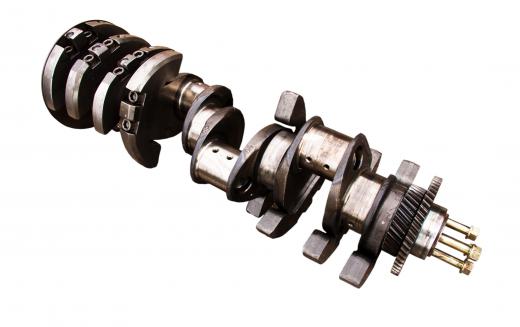A mechanical bushing is a sleeve-shaped lining utilized to reduce friction and wear between mechanical parts or to restrain or constrain the motion of the parts. Sometimes called plain bearings, mechanical bushings are used to line a hole in a stationary part of a mechanism and are effective in spreading friction and wear over the surface of the bushing as opposed to directing it to one spot.
The most basic elements of bushing mechanics consist of a rotating rod or shaft running through a hole that is lined with a mechanical bushing. The rod is thus able to rotate inside the bushing with the bushing relieving the rod of the friction and wear generated by the rotation.

In an internal combustion engine, the crankshaft is an example of the typical lubricated rolling mechanical bushing/plain bearing. The piston rods are connected to the rotating crankshaft with the rotation of the crankshaft pushing the piston rods up and down. The connecting point of the steel piston rod and the polished steel shaft is a hole in the rod which is lined with the bushing. This particular bushing gets an assist from the lubricating action of engine oil in dissipating the friction of the rotating shaft.
An example of a non-lubricated mechanical bushing would be that used in the through-hull fitting of the propeller shaft on a boat with an inboard engine. The propeller shaft runs from the transmission, through a hole in the hull and into the water. This hole or fitting is lined with an anti-corrosive, polymer or bronze bearing which dissipates friction and reduces wear on both the hull and the shaft. In addition, this fitting is designed to prevent water from entering the boat.
Babbitt metal, which is often called white metal, and plastics are used far more often than any other materials in the manufacture of mechanical bushings because of their effectiveness at reducing friction as well as their light weight and relatively low cost. Other materials used in the ordinary bushing include aluminum, rubber, bronze, carbon and various ceramics.
A mechanical bushing or plain bearing should not be confused with a regular bearing. A regular bearing is usually constructed of more durable material, is less inclined to be lubricated as opposed to introducing lubrication and is very often a moving part in itself, as in the case of a ball bearing.
